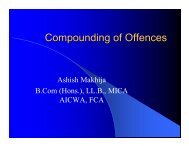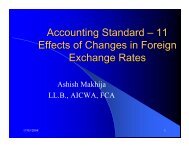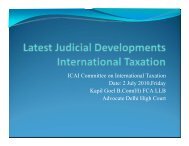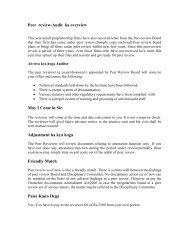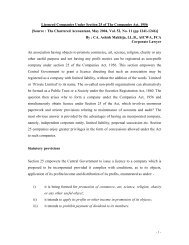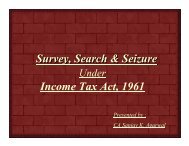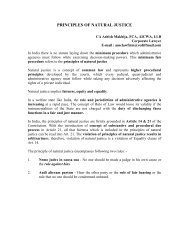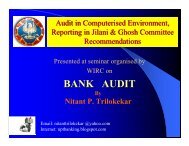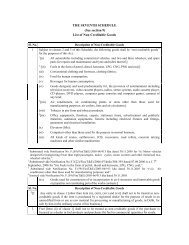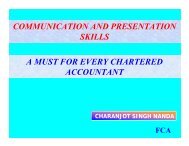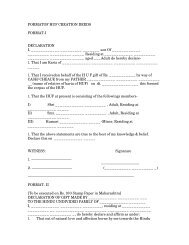dsrawat, fca intangible assets
dsrawat, fca intangible assets
dsrawat, fca intangible assets
You also want an ePaper? Increase the reach of your titles
YUMPU automatically turns print PDFs into web optimized ePapers that Google loves.
Now the controversy of amortization or not amortization has been put to rest and as per the accountingstandard the <strong>intangible</strong> asset should be carried at cost less accumulated amortization.If economic benefits from <strong>intangible</strong> asset are achieved through legal right granted for finite period theuseful life of <strong>intangible</strong> should not exceeded legal right period unless the legal right is renewable andrenewal is almost certain.What method of amortization should be followed the answer mainly comes from the matching concept whichrequires that the benefit derived (consumed) from the <strong>intangible</strong> in the form of increased profitability shouldbe matched with the cost (Depreciation/amortization expenses).If the pattern of benefit and cost can be determined, reliably, then the enterprises should amortize the<strong>intangible</strong> as per the pattern. However if no pattern of benefit consumed can be determined reliably thenStraight-line method should be followed.Amortization is generally recorded as an expense in financial statement. However sometimes economicbenefits consumed of <strong>intangible</strong> asset is used to produce other asset, in this case the amortization expenses isadded in the cost of other asset rather than showing it as an expenses AS-2 ‘valuation of Inventory’.As per FAS-142 (US GAAP) <strong>intangible</strong> <strong>assets</strong> which are subject to amortization are treated almost in thesame way as under Indian GAAP (AS-26). FAS-142 prescribes the following principles/rule foramortization:-• A recognised <strong>intangible</strong>s asset shall be amortized over its useful life to the reporting entity unless thatlife is determined to be indefinite. If an <strong>intangible</strong>s asset has a finite useful life, but the precise lengthof that life is not known, that <strong>intangible</strong>s asset shall be amortized over the best estimate of its usefullife. The method of amortization shall reflect the pattern in which the economic benefits of the<strong>intangible</strong>s asset are consumed or otherwise used up. If that pattern cannot be reliably determined, astraight-line amortization method shall be used. An <strong>intangible</strong>s asset shall not be written down or offin the period of acquisition unless it becomes impaired during that period.• The amount of an <strong>intangible</strong>s asset to be amortized shall be the amount initially assigned to that assetless any residual value. The residual value of an <strong>intangible</strong> asset shall be assumed to be zero unless atthe end of its useful life to the entity the asset is expected to continue to have a useful life to anotherentity and (a) the reporting entity has a commitment from a third party to purchase the asset at the endof its useful life or (b) the residual value can not be determined by reference to an exchangetransaction in an existing market for that asset and that market is expected to exist at the end of theasset’s useful life.Review of Amortization MethodAs per Accounting Standard-26, the amortization method should be reviewed at the end of each financialyear and if-• The expected useful life of the <strong>intangible</strong> asset has significantly changed,• The pattern of future economic benefit has significantly changed.The amortization method should be changed accordingly. Significant change in useful life of asset may bedue to subsequent improvement in <strong>intangible</strong> asset, on account of subsequent expenditure on <strong>intangible</strong>s.FAS-142 also, laid down the same principles as in Indian GAAP. Para 14 of FAS-142 states as under forreview of amortization method3




